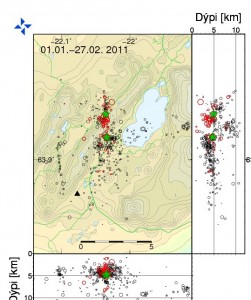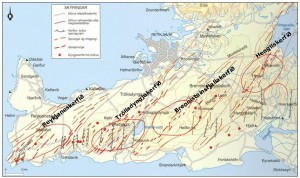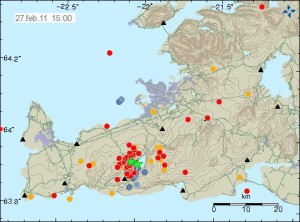Today has been interesting in regards to the earthquake activity in Krýsuvík volcano. But today there have been well over 800 earthquakes (far as I can tell). Over the past few hours the earthquake activity has slowed down a little bit. But far as I can tell it is far from over and might start to pick up again at any time and with no warning at all.
Icelandic Met Office released a picture of the earthquake activity in Krýsuvík volcano so far for the year 2011.

Black circles are earthquakes up to 26th of February. Red ones are earthquakes on the 27th February. Picture is from Icelandic Met Office web site and copyright of this picture belongs to them.
Here is a picture of the location of the earthquakes so far.

Picture is from Icelandic Met Office web site and copyright of this picture belongs to them.
Please note that this image does not have all the earthquakes that have been recorded in Krýsuvík volcano today.
More information about volcanoes in Reykjanes can be found here, in Icelandic.
Here is a picture, with fissure swarms and other things related to the four volcanoes that are on the Reykjanes Peninsula in Iceland.

Picture is from here. Copyright of this picture belongs to however owns it. Please note that I use this picture in a educational purpose on this web site. If there are any issues with the use of this picture. Please email me here: jonfr@8930a1.talbot.shared.1984.is
I expect that this earthquake activity is going to continue in the coming hours. But it is impossible to know when it stops.
Click on the pictures to see higher resolution of them.
Blog post updated at 04:12 CET on 28.02.2011. Title of this blog post is fixed.
Blot post updated at 13:40 CET on 28.02.2011. Spelling error fixed.





